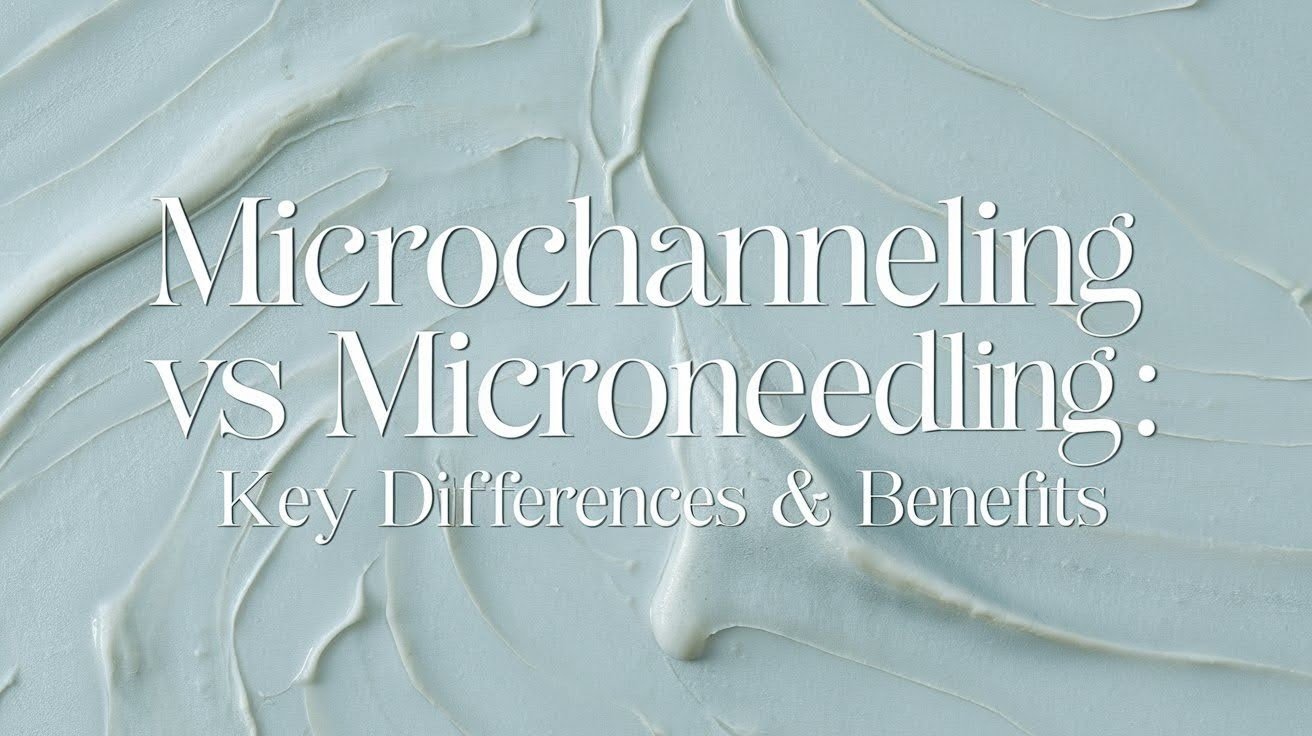What Does Skin Look Like After Skin Tag Removal?
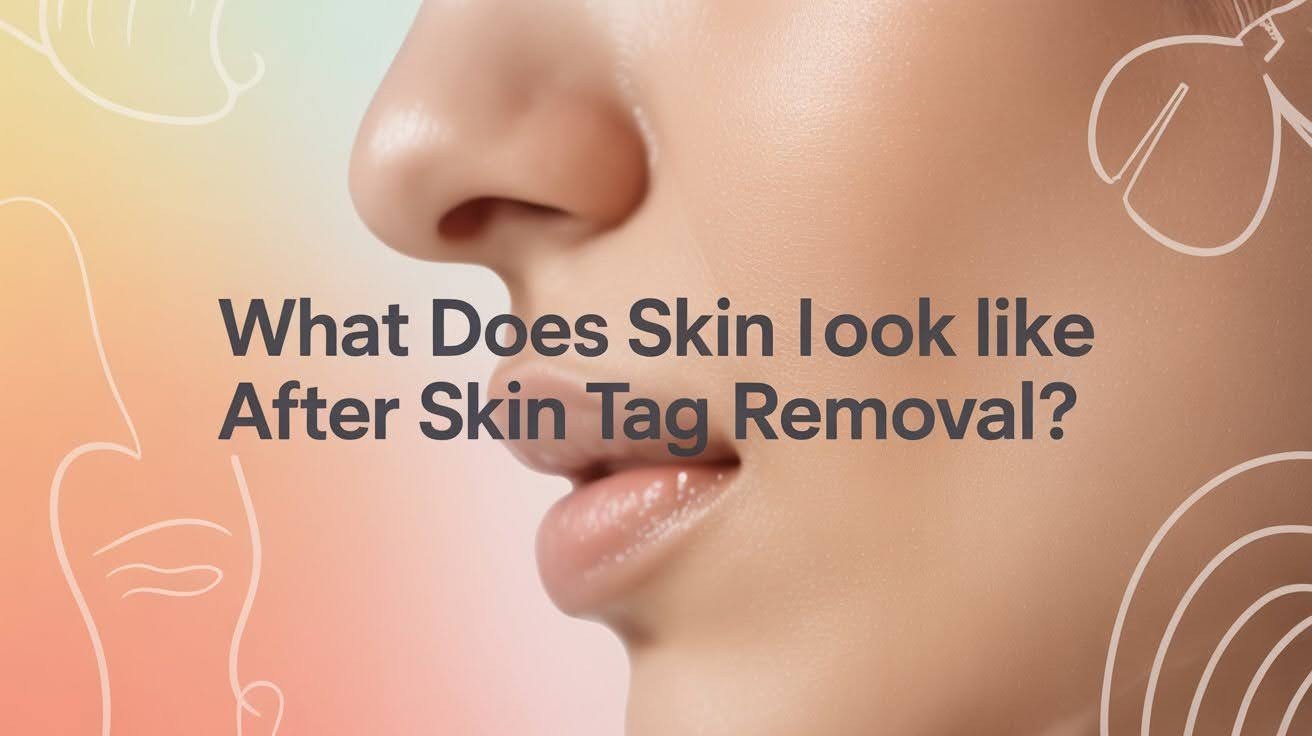
If you’ve just had a skin tag removed, you might be looking at that spot and asking yourself, “Is this normal?” Don’t worry. It’s a question many of us have after the procedure.
Skin tags are those tiny, harmless bumps that pop up on our bodies. Most people get them removed because they’re annoying or they just don’t like how they look. That’s completely fine.
The real question is what comes next. Your skin is going to change as it heals. Knowing what to expect makes the whole process less stressful. Good aftercare helps you heal smoothly and keeps scarring to a minimum.
Immediate Appearance After Skin Tag Removal
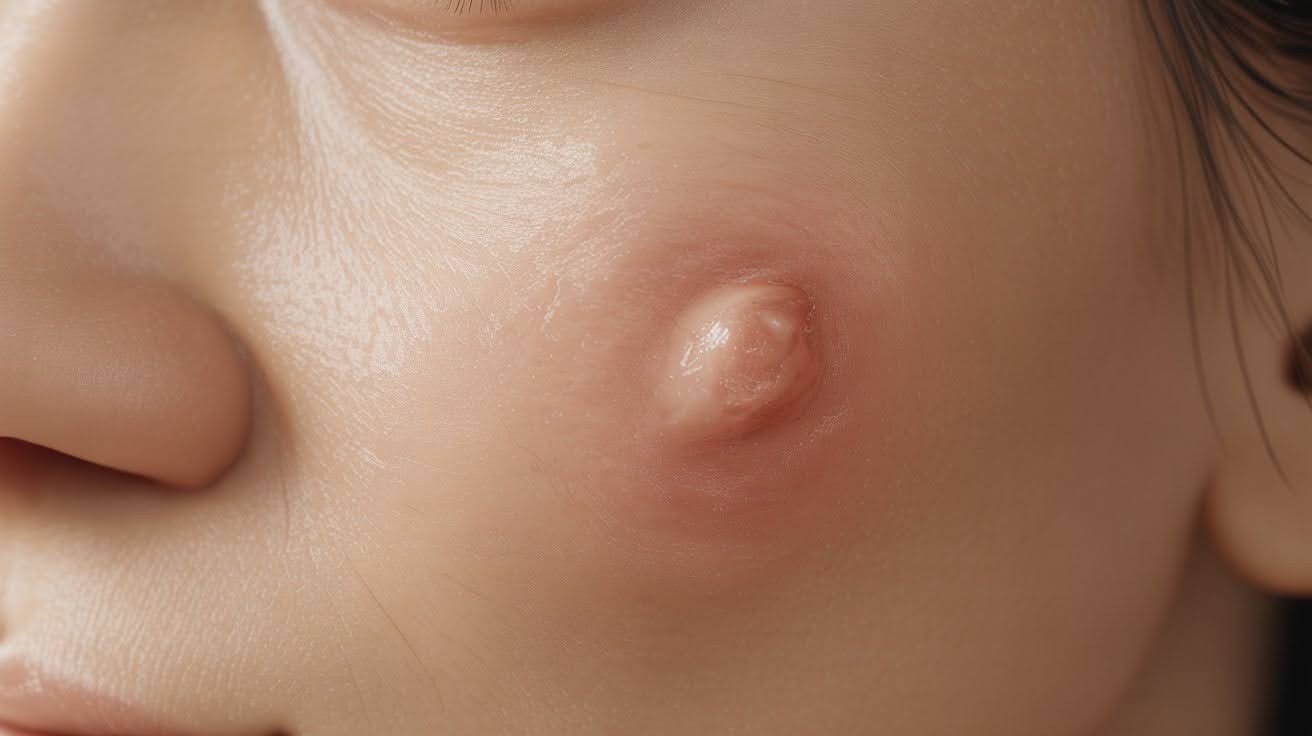
Right after removal, your skin will show redness, swelling, and scabbing. These are normal signs of your body starting to heal.
Right After the Procedure
The treated spot won’t look perfect right away. That’s completely normal. You’ll probably notice some redness and swelling around the area. It might look a bit raised too.
Some light bleeding can happen depending on how your doctor removed the skin tag. Different methods work in different ways. Excision involves cutting, cryotherapy uses freezing, electrocautery burns it off, and ligation ties it off. Each one affects your skin slightly differently.
If your doctor used local anesthesia, that area might feel numb for a little while. This feeling goes away on its own as the medicine wears off.
Scabbing and Crusting
Within a day or so, you’ll see a small scab form over the spot. This is actually a good sign. Your body is doing exactly what it should.
The scab acts like a natural bandage. It protects the new skin growing underneath. Think of it as your body’s way of keeping germs out while healing happens.
Here’s the most important part. Don’t pick at it. Don’t scratch it either, even if it itches. Messing with the scab can cause infection or leave a scar. Let it fall off naturally when your skin is ready.
Short-Term Healing (First Few Days to a Week)
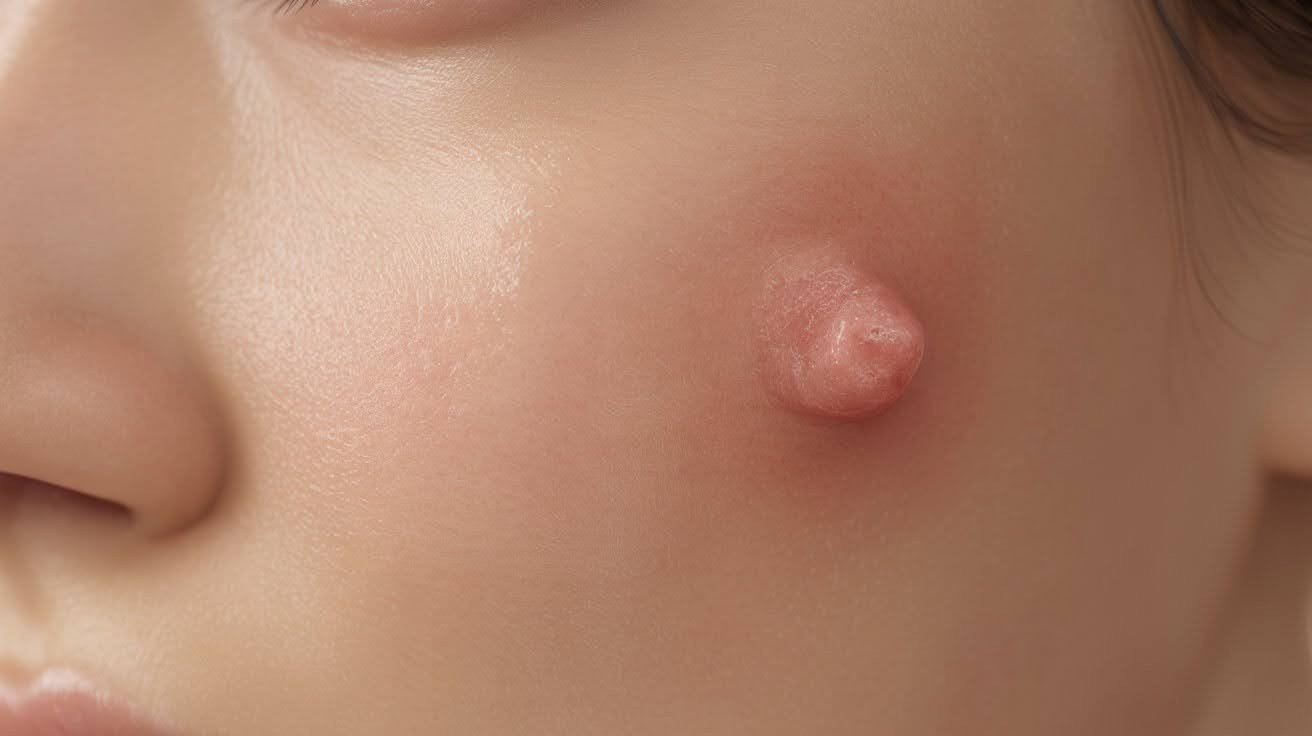
During the first week, expect redness, tenderness, and minor swelling. These symptoms gradually improve as your skin begins the healing process.
Redness and Tenderness
Your skin will stay red or pink for the first few days. This is your body sending blood to the area to help it heal. The color might look bright at first, but it fades over time.
You’ll probably feel some tenderness when you touch the spot. A little soreness is normal too. It shouldn’t hurt too much though.
If you do feel uncomfortable, basic pain relievers from the pharmacy usually help. Things like ibuprofen or acetaminophen work well for most people. Just follow the directions on the bottle.
Swelling or Mild Irritation
Some puffiness around the treated spot is common in the first week. The swelling is usually small and goes down on its own.
Be careful with what touches the area. Tight clothing rubbing against it can make things worse. The same goes for jewelry, especially if the skin tag was on your neck or ear.
Try to keep the spot free from friction as much as possible. Loose clothing helps. If you need to cover it, use a soft bandage that won’t rub or pull at the skin.
Long-Term Healing (1–3 Weeks)
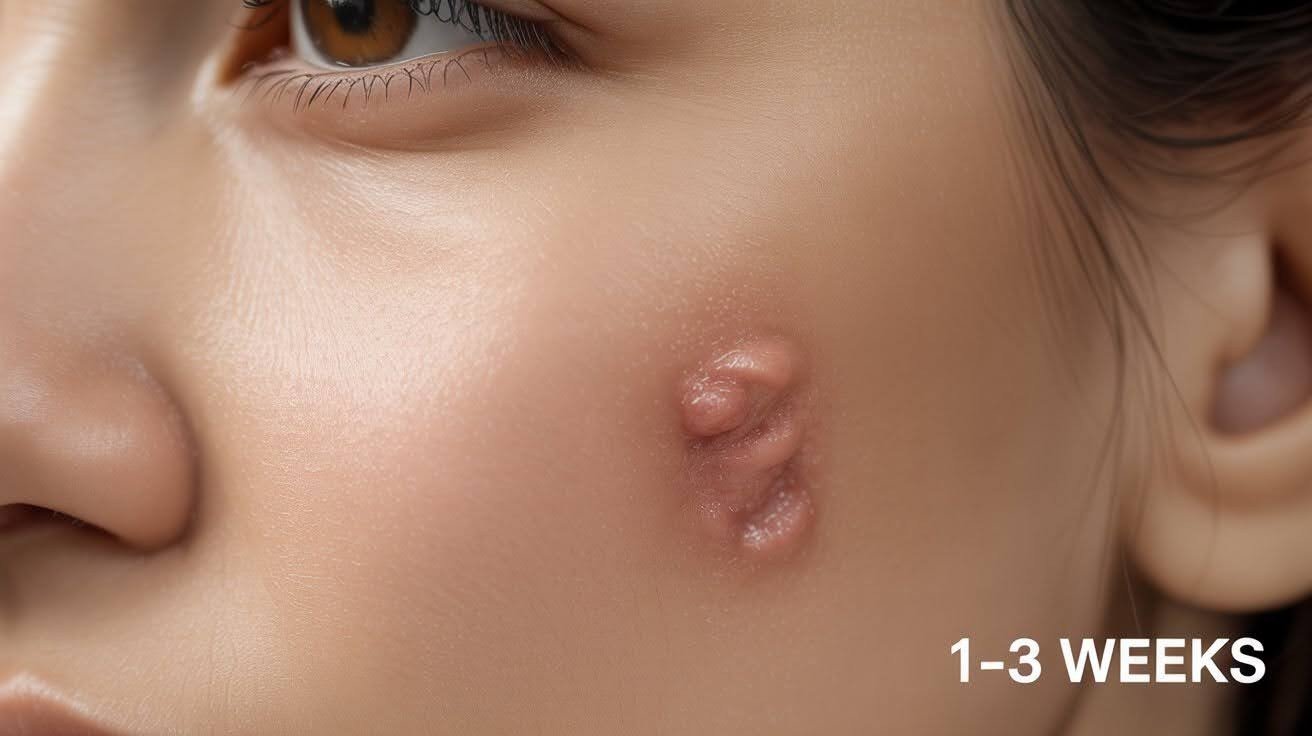
Between one and three weeks, redness fades and skin blends better. Any scars that form will continue improving over time.
Fading of Redness
After the first week or two, you’ll notice the redness starting to calm down. It happens slowly, so don’t expect it to disappear overnight.
Your skin begins to match the color of the area around it. This is a sign that healing is going well. The treated spot starts to look more like the rest of your skin.
You might still see a slightly raised bump where the skin tag used to be. Don’t panic. This usually goes away with time. Your skin is still rebuilding itself underneath.
Scar Formation
Good news: most people end up with very little scarring. The key is taking care of the area properly from day one.
If a scar does form, it often looks pink at first. Sometimes it might be lighter than your normal skin tone. This is temporary for most people.
Give it time. Over the next few months, scars typically flatten out and fade. Many become almost invisible. Your skin continues improving long after the initial healing period ends. Be patient with the process.
Factors Affecting Skin Appearance After Removal
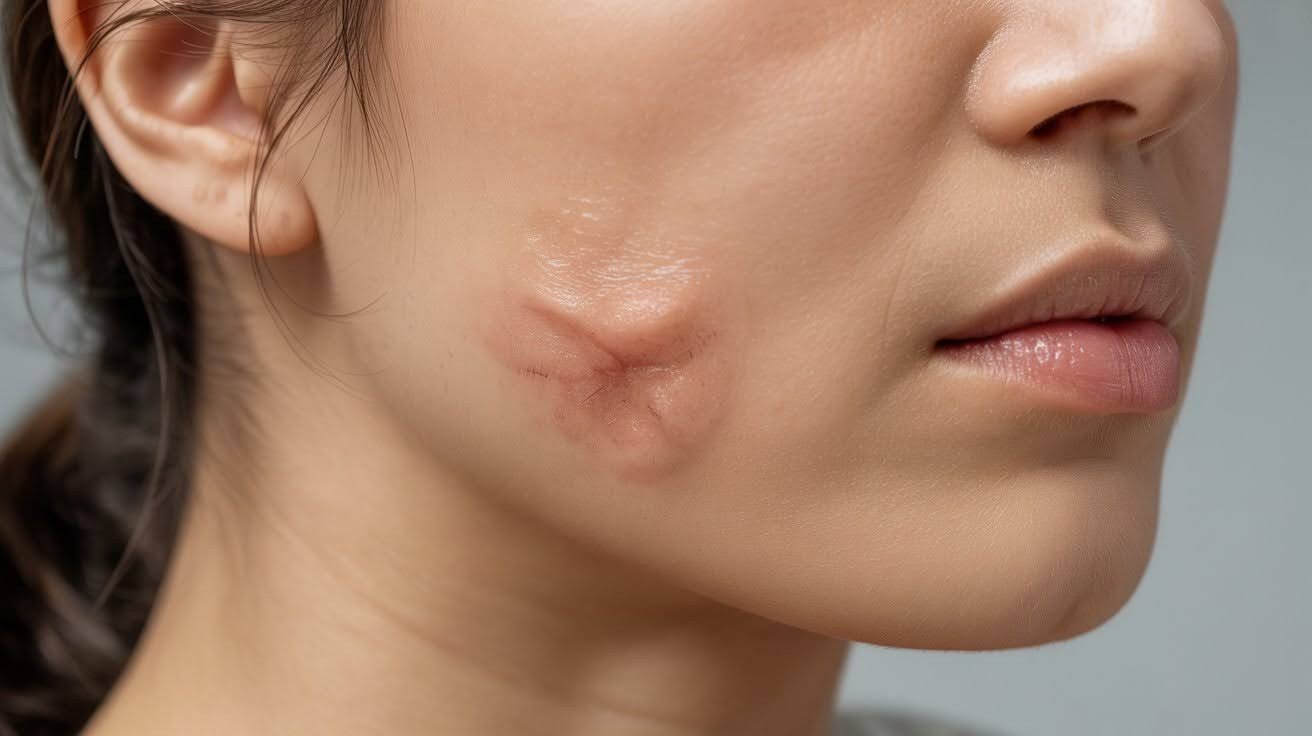
Your healing depends on the removal method used, where the skin tag was located, and your personal health and skin characteristics.
Removal Method
The way your doctor removed the skin tag makes a difference in how your skin looks afterward.
Excision means cutting it off with a scalpel. This method is precise but might need a stitch or two. You’ll have a small cut that heals like any minor wound.
Cryotherapy freezes the skin tag off. A scab forms and eventually falls off on its own. No cutting involved.
Electrocautery burns away the tissue with heat. You might see a slight burn mark at first, but it usually heals cleanly without much trace.
Ligation ties off the skin tag at its base. The tag falls off after a few days. This causes very little disruption to your actual skin.
Skin Type and Location
Where the skin tag matters. Some body parts heal differently than others.
If you have thicker skin, you might heal faster. Thicker skin often shows less scarring too. That’s just how our bodies work.
Sensitive spots like your eyelids or neck can be trickier. These areas might show some temporary color changes. The skin there is more delicate, so it reacts more noticeably.
Individual Healing Factors
Your body’s healing ability is unique to you. Several things play a role.
Age affects how quickly you bounce back. Your overall health matters too. If you smoke, healing takes longer. What you eat also impacts how well your skin repairs itself.
Existing skin conditions can slow things down. Issues like eczema or psoriasis might affect the healing process. If you have any of these, tell your doctor before the removal. They can plan accordingly.
Aftercare Tips to Ensure Healthy Healing
- Wash the treated spot gently once or twice a day with mild soap and warm water. Pat it dry with a clean towel and avoid rubbing or scrubbing the area.
- Keep the area out of direct sunlight while it heals, as sun can darken scars and slow recovery. If you go outside, cover the spot or use sunscreen with SPF 30 or higher.
- Watch out for anything that rubs against the healing skin, like tight clothes or jewelry. Choose loose clothing that won’t catch on the area and cause irritation.
- Ask your doctor what ointment to use, such as an antibiotic cream or healing gel. Apply them as directed to keep infection away and help reduce the chance of scarring.
- Keep an eye on how the area looks and feels throughout the healing process. Most people heal without problems, but monitoring helps catch any issues early.
- Watch for signs of infection like extra redness that spreads, increased swelling, pus, or pain that gets worse. If you notice any of these symptoms, call your doctor right away for treatment.
Conclusion
Taking care of your skin after removal really makes a difference. When you follow the right steps, you’ll see better results with less scarring. Your skin will look more natural as it heals.
Remember, some redness, scabbing, and tenderness are part of the process. These things don’t last forever. They’re just your body doing its job.
Working with a dermatologist gives you the best outcome. They know how to remove skin tags safely and can guide you through recovery. You’ll feel more comfortable and confident about the whole process.
If you’re thinking about skin tag removal, talk to a professional. Your skin deserves that care.
Frequently Asked Questions
How long does it take for skin to heal after skin tag removal?
Most people see complete healing within two to three weeks. The redness and any scabs usually fade within the first week, while the skin continues to improve over the following months.
Will I have a scar after skin tag removal?
Most people end up with minimal to no scarring, especially with good aftercare. Any scars that do form typically fade over time and become barely noticeable within a few months.
Is it normal for the area to be red and swollen after removal?
Yes, redness and mild swelling are completely normal in the first few days. These are signs your body is healing, and they should gradually go away on their own.
Can I cover the area with makeup after skin tag removal?
Wait until the scab falls off and the skin has closed completely before applying makeup. Covering it too early can trap bacteria and increase the risk of infection.
When should I be concerned about how my skin looks after removal?
Contact your doctor if you notice increased redness spreading outward, pus, severe pain, or swelling that gets worse. These could be signs of infection that need medical attention.








